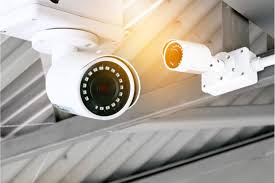Closed-Circuit Television (CCTV) cameras have Commercial security cameras become a ubiquitous part of modern life, serving as silent sentinels across urban and rural landscapes alike. Whether in bustling city centers, quiet suburban neighborhoods, or remote industrial facilities, CCTV cameras have emerged as an essential tool for surveillance, security, and crime prevention. Their evolution over the years has transformed them from bulky, grainy black-and-white devices to sophisticated, high-definition, and even intelligent systems capable of facial recognition and behavioral analysis. This article delves into the history, development, technology, applications, and future of CCTV cameras, underscoring their significance in a world increasingly reliant on visual surveillance.
A Brief History of CCTV Cameras
The concept of CCTV was first introduced in 1942 by German engineer Walter Bruch, primarily for military purposes. The system was utilized to observe the launch of V-2 rockets, providing a safe and controlled environment for monitoring. It wasn’t until the 1960s that CCTV technology began to be employed for security and surveillance in public spaces. In the United Kingdom, for example, the installation of CCTV cameras started to become widespread after the police used them in public places to monitor crowds during high-profile events and demonstrations.
The technology underwent significant changes in the 1980s and 1990s, with the introduction of digital recording systems replacing analog, magnetic-tape-based systems. This transition not only improved the quality of the recordings but also simplified storage and retrieval processes. The advent of the internet and advances in digital technology further revolutionized CCTV systems, allowing for remote access and real-time monitoring.
Technological Advancements in CCTV
- High-Definition and 4K Resolution: Modern CCTV cameras now offer high-definition (HD) and 4K resolution, providing clear and detailed images. These advancements help in identifying individuals, license plates, and other critical details that are essential in crime prevention and investigation.
- IP Cameras and Wireless Technology: Internet Protocol (IP) cameras have largely replaced older analog systems. These cameras can transmit data over a network, allowing for remote access and control. Wireless technology has also enabled more flexible installation options, reducing the need for extensive cabling.
- Pan-Tilt-Zoom (PTZ) Cameras: PTZ cameras offer the ability to pan (move left or right), tilt (move up or down), and zoom in on particular areas, providing more coverage than fixed cameras. This functionality is particularly useful for large spaces and monitoring high-traffic areas.
- Infrared and Night Vision: Modern CCTV cameras are equipped with infrared LEDs, enabling them to capture images in low-light or no-light conditions. Night vision capabilities ensure that surveillance is continuous and effective, even after dark.
- Artificial Intelligence and Machine Learning: The integration of AI and machine learning has allowed CCTV systems to become more intelligent. They can now automatically detect suspicious behavior, recognize faces, and differentiate between objects, animals, and people. These systems can send real-time alerts to security personnel, enhancing the efficiency of surveillance.
- Cloud Storage and Analytics: Cloud-based CCTV systems offer scalable storage solutions and advanced analytics. Video footage can be stored securely in the cloud, eliminating the need for physical storage devices. Additionally, cloud-based analytics can process vast amounts of data quickly, identifying patterns and anomalies.

